5 different tools used for drying the pitch and outfield in international cricket
Here we look at five different methods and tools used to dry the pitch and outfield in International cricket.
View : 152.8K
2 Min Read
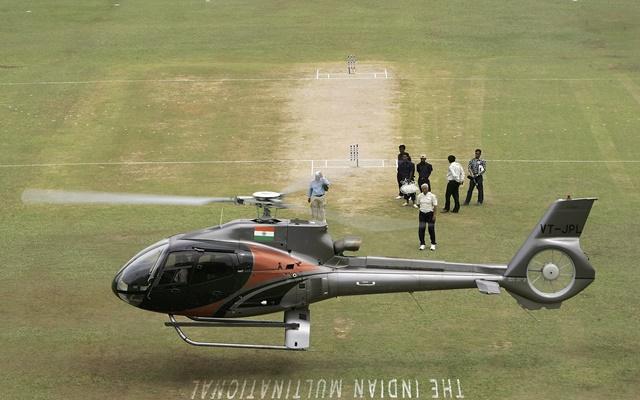

A helicopter tries to dry the pitch after heavy overnight rain during the Fifth One Day International match between India and England at the Neheru Stadium on April 9, 2006 in Gauhati, India. (Photo by Tom Shaw/Getty Images)
The first game of the 3-match T20I series between India and Sri Lanka ended without a result due to a few spells of rain after the toss. It was the wet patches on pitch caused the abandonment though there was enough time to clear the covers and water.
The ground staff implied various methods to dry the pitch by using things like hair drier and cast iron. A wide range of tools and methods have been used to get the cricket field fit for the play in the past. But hair drier and cast iron seemed to be the rarest of those.
Here we look at five different methods and tools used to dry the pitch and outfield in International cricket:
5. Air Blowers
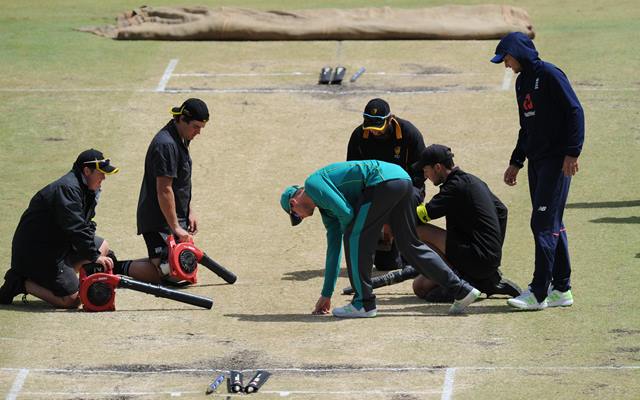
Air Blower is probably the most used tool to dry the wet patches on pitch and outfield in cricket. It could be something that the ground staff in Guwahati missed on Sunday only to end up using a hair drier. One of the major instances were air blowers saved from washing out a game was during the 2017/18 Ashes series.
Water spilt over the pitch ahead of the final day’s play of the W.A.C.A Test match. England were close to losing the Test by an innings margin at the start of day 5. If they lose the Test, they would be going 0-3 down in the 5-match series with two matches still to be played.
The ground staff put on extra efforts to dry the pitch as it was marked to be the last Test match at the venue. The game eventually began after Lunch and Australia completed an innings win to reclaim the Ashes.
4. Helicopters
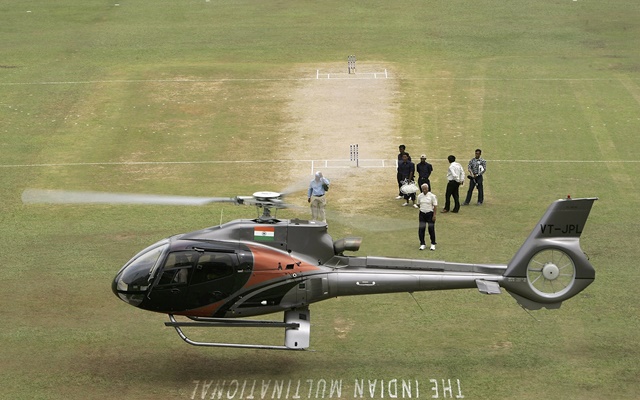
The usage of helicopters on the cricket field usually happens in medical emergency cases. But at times, the aircraft has come to the rescue in wet outfield conditions to provide the push in the drying process. One of the major instances of usage of helicopters in International cricket came during the 2003 World Cup game between Australia and Netherlands in Potchefstroom.
The rainwater on the covers crept on to the pitch and the helicopters came to the rescue. The match started one hour after the scheduled time with a reduction of three overs. A couple of more spells of rain during the match cut it down to a 36 overs-a-side. Australia won the game by 75 runs on DL method. Ricky Ponting hailed the Netherlands’ willingness to play despite the bad weather.
Even Guwahati used a helicopter to dry the venue ahead of 2006 India-England ODI which was to be played at the Nehru Stadium. Despite the efforts of the aircraft, the match couldn’t get going. The match was abandoned even without a toss. The official announcement was made close to the afternoon which was a severe backlash from the crowd who ended up throwing bottles on the ground and lighting fire in the stands.
3. Pitchfork

There are occasions of people digging up and making holes to pitch and outfield in protest to local or national issues causing the abandonment of the matches. However, in a rare instance, the ground staff of the Queen’s Park Oval in Port of Spain decided to make holes in the outfield in order to get it dry. This occurred during the 2016 Test match between India and West Indies.
Continuous rains made the outfield wet which didn’t get better despite the sun coming out. Hence, the ground staff decided to use pitchfork for making holes in the troublesome parts on the outfield. Later, they used the air blowers for drying the area. The holes were made to expose sun and air to the surface underneath as a lot of water was soaked in various places on the field.
All the efforts made by the groundsmen went in vain as no play was possible on the last four days of the match. Only a total of 22 overs of play happened during the match; all before the lunch on day 1 were the West Indies made 62/2 after electing to bat. It was the 4th game of the 4-match Test series and India were already leading by 2-0 margin having won the 1st and 3rd Tests.
2. Pedestal fans
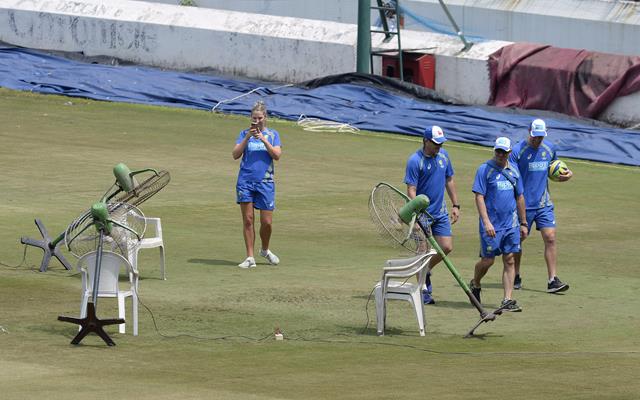
The purpose served by the hair drier, air blower and helicopter on a cricket field is same – drying the wet areas with help of air. But it seemed as if the ground staff of the Hyderabad’s Rajiv Gandhi International Cricket Stadium couldn’t find one of them. They ended up using the Pedestal fans for drying the wet patches on the outfield due to continuous rains in the city.
This incident happened on the eve of the T20I game in 2017 between India and Australia. The staff placed a couple of Pedestal fans angling around the wet area on the outfield. A lot of wet patches were created all over the ground as the city was drenched by heavy rains for nearly 10 days prior to the match. The game was delayed due to the wet outfield despite not much rain on the match day.
The groundsmen tried various things to get the field match fit at least for a 5-over game. However, all the efforts went in vain due to the sandy outfield. The match was abandoned even without a toss and the 3-match T20I series had to be shared by India and Australia who won a game each. The abandonment left Hyderabad to wait two more years for its T20I debut.
1. Fire
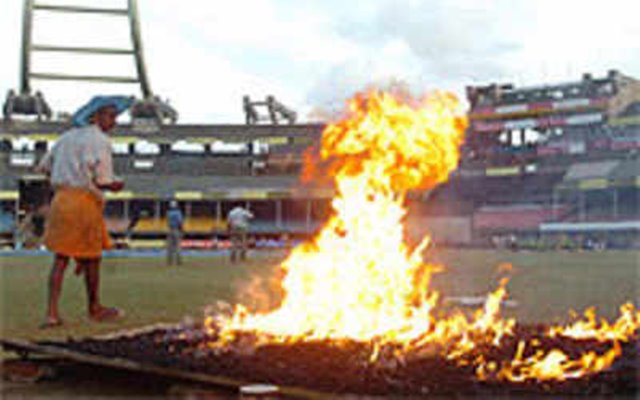
Seeing fire on the cricket field doesn’t make for a pleasant view especially in the stands when the home team is underperforming or losing a crucial game. However, the ground staff of the Kochi’s Nehru Stadium came up with an innovative idea of using fire in drying the outfield. During their tour of India in 2007, Australia came to Kochi for playing the 2nd game of the 7-match ODI series.
The first ODI held in Bangalore ended without a result after the completion of the first innings. But the Kochi groundsmen put their best efforts to get the game going and also ensured there was no loss of overs. For that, they lit up the fire with flammable materials (Probably coal) in a tray near the bowler’s run-up which seemed to have given quick and a better result.
The toss took place about 15 minutes after the scheduled start of play and the first ball was bowled 15 minutes later. The match got completed without any further interruptions. The Australian team took 1-0 lead in the series with an 84-run win after posting 306/6. The on-field spat between local lad Sreesanth and Andrew Symonds was the highlight of the game.
Download Our App